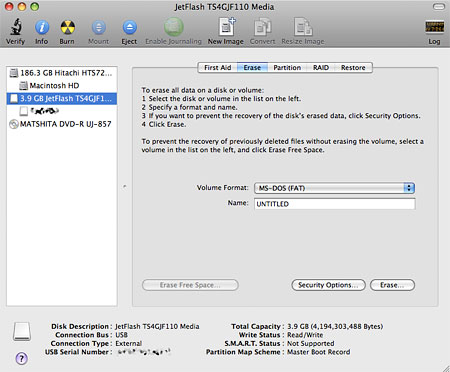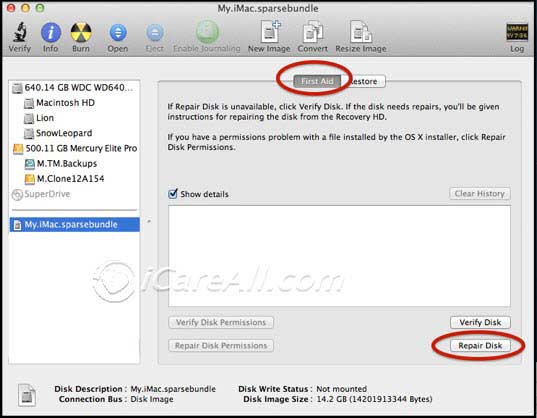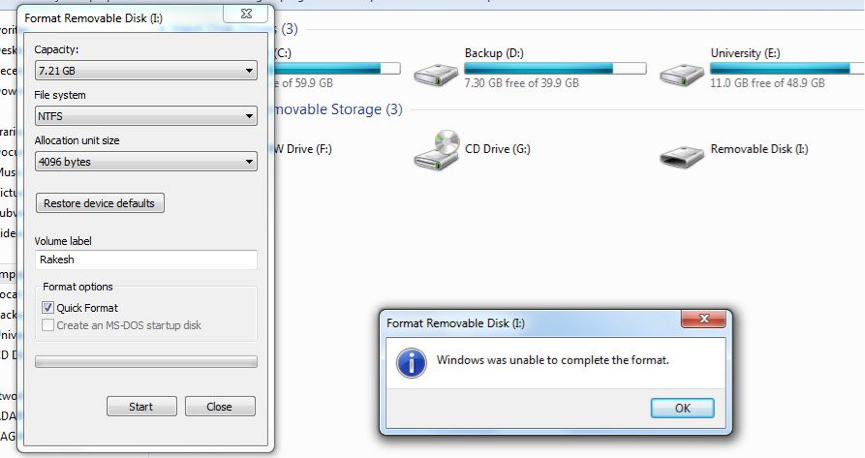

- #Usb drive won't read formatted for mac how to
- #Usb drive won't read formatted for mac install
- #Usb drive won't read formatted for mac driver
- #Usb drive won't read formatted for mac Pc
It ensures that no bug in the third-party driver can damage your Mac-formatted drive and the files on it. This application’s read-only nature isn’t necessarily a bad thing. dmg disk images to get at the files inside them.
#Usb drive won't read formatted for mac Pc
But you can open HFSExplorer, read a Mac-formatted drive, and copy the files to your Windows PC without paying a dime.

#Usb drive won't read formatted for mac install
You can’t use it to write to Mac-formatted drives, and it doesn’t install a file system driver that integrates into File Explorer. HFSExplorer isn’t fancy, though, and doesn’t have a lot of features. Then, install HFSExplorer like you would any other Windows program. It does require Java, however, so you’ll have to install that first. It’s the only completely free way to access a Mac-formatted drive. If you only need to get a couple files off the drive, we recommend HFSExplorer.

#Usb drive won't read formatted for mac how to
RELATED: How to Restore Files From a Time Machine Backup on Windows Option One: HFSExplorer Is Free and Basic But be absolutely sure there’s nothing you need before you do. Of course, if the drive doesn’t have any important files on it, you can go ahead and format it. Just don’t format the drive until you get the important files off the drive. That’s fine, because other applications do. This message appears because Windows doesn’t understand Apple’s HFS+ file system. This is because the USB external hard drive is mounted under /Volumes folder, so you should add the /Volumes directory before USB disk name when you run the cp command.When you connect a Mac-formatted drive to Windows, you’ll be informed that “you need to format the disk in drive X: before you can use it.” Don’t click the “Format disk” button or Windows will erase the contents of the drive–click “Cancel”!.But above command may raise an error message such as usb/Pics: No such file or directory.The -R parameter will copy all the subdirectories under the Documents directory to the USB external hard drive.Open a terminal and run the command cp -R Documents /usb.How To Copy Files From macOS To USB External Hard Drive In Command-Line. Learn more at NTFS 3G Official Github Website.ģ.sudo /usr/local/bin/mount_ntfs /dev/ntfs-disk1 /Volumes/NTFS You can also run the /usr/local/bin/mount_ntfs command to mount the NTFS disk partition as below.sudo /usr/local/bin/ntfs-3g /dev/ntfs-disk1 /Volumes/NTFS -o local -o allow_other -o auto_xattr -o auto_cache Run /usr/local/bin/ntfs-3g command to mount the NTFS disk partition with the above mount point manually in read-write mode.Create a directory as the mount point volume label for the NTFS partition.Unmount the existing NTFS format partition if needed.=> Installing ntfs-3g dependency: gettext => Installing dependencies for ntfs-3g: gettext Warning: ntfs-3g has been deprecated because it requires FUSE! Open a terminal and run the command $ brew install ntfs-3g to install NTFS-3G.Install NTFS-3G To Make MacOS Support Read-Write Microsoft Windows NTFS File System. After the format process complete successfully, you can copy files from macOS to USB disk successfully.Ģ.Select ExFAT in the Format drop-down list and begin to format. Then click the Erase button at the top of the right panel.Open macOS Finder -> Applications -> Utilities -> Disk Utility.So we should change the USB Disk file format to others such as FAT or ExFAT. So if the USB disk is NTFS format, then the copy and paste operation can not be operated.

The main reason for this issue is macOS can only read NTFS format files but can not write files to NTFS disk. Format The USB Disk With ExFat File Format.


 0 kommentar(er)
0 kommentar(er)
